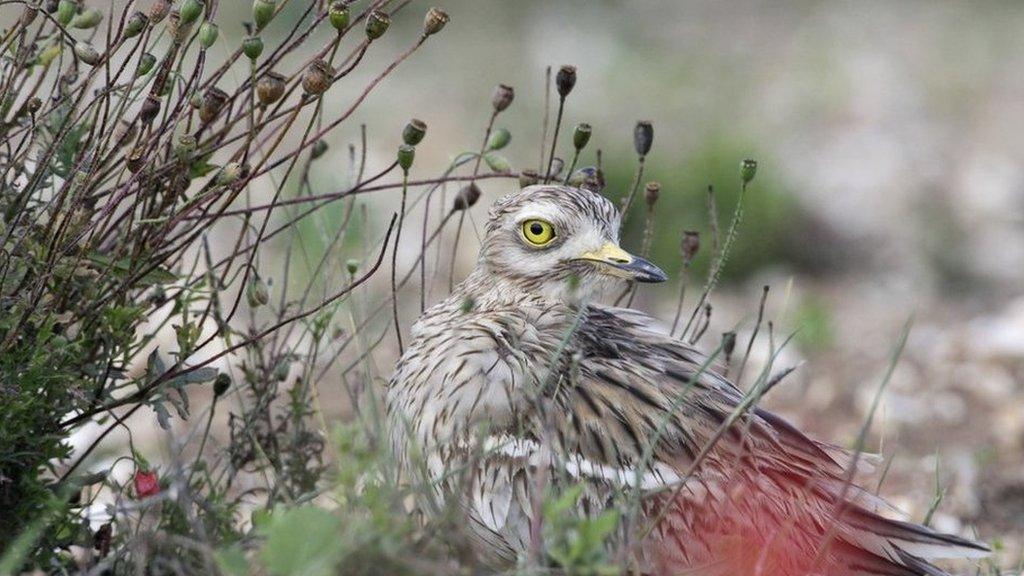Red kite numbers soar in Cambridgeshire after they steal meat at zoo
- Published
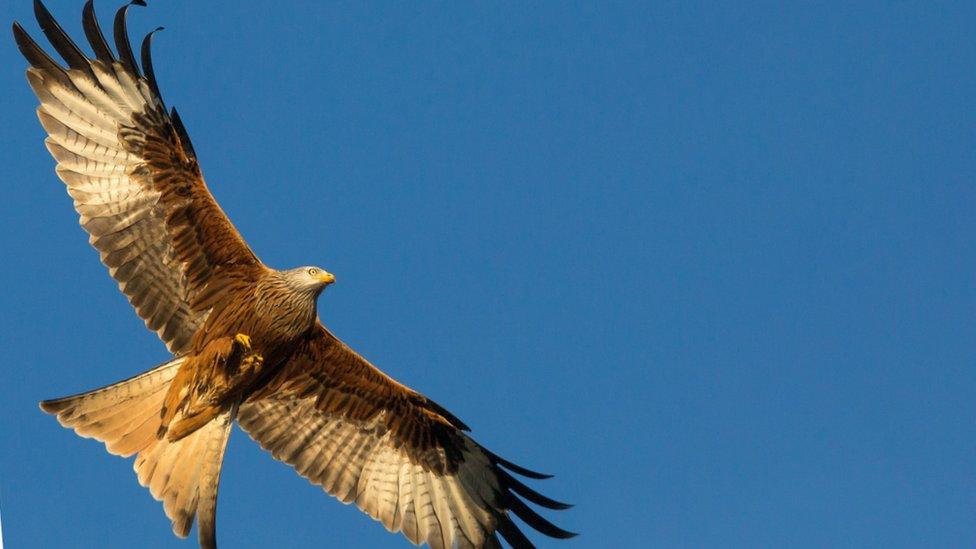
The zoo says the large birds are now more common than wood pigeons or crows
Staff at a zoo have said the number of red kites have soared due to them stealing meat destined for tigers, cheetahs and dingoes.
Hamerton Zoo Park, near Peterborough in Cambridgeshire, said the large birds were now more common than wood pigeons or crows.
Red kites were virtually extinct in Britain 35 years ago.
Keeper Ben McRobie said the zoo had "one of the biggest populations of red kites in the whole country".
"To see 42 in the sky at once is quite incredible, we do regular bird counts for local conservation of our native birds and the kites are now more common than crows or wood pigeons," he said.
"I would say that we have one of the biggest populations of red kites not only in Cambridgeshire, but the whole country, if not the world."
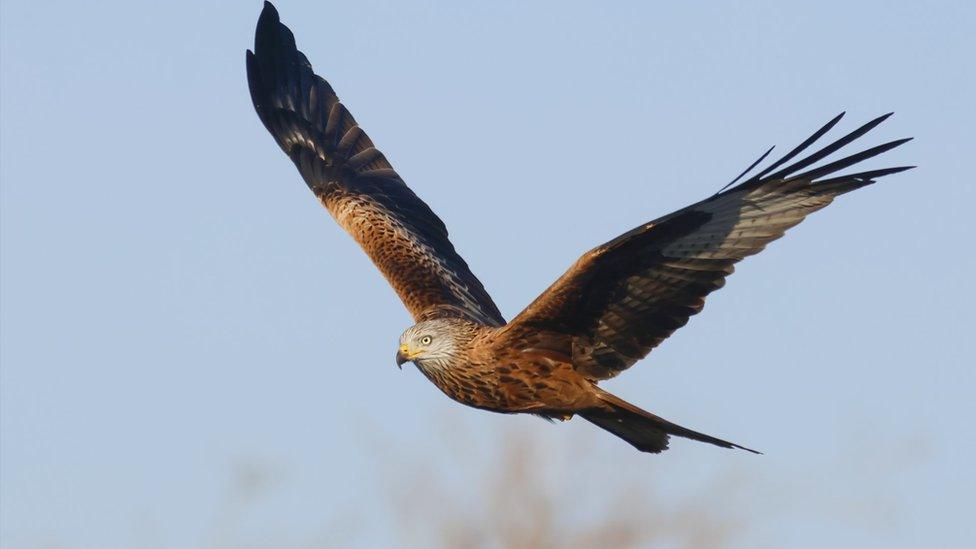
The RSPB advise against the supplementary feeding of red kites
He added that red kites were "a graceful bird of prey, unmistakable with its reddish-brown body, angled wings and deeply forked tail".
"They are unbelievably brave animals. Quite often when I throw meat into the tiger enclosure it never touches the ground [because] the kites spectacularly snatch it mid-air and fly off with it, leaving a very confused tiger," he said.
"Because they are such big, majestic birds with wing spans of over one metre, many people think they have escaped from aviaries. We get comments every day about them."
'Globally important'
The Cambridgeshire Bird Club said that the first breeding in the county was in 2002, following the disappearance of Red Kites in about 1850. Since then numbers have increased to an estimated 40 to 50 breeding pairs.
"Breeding is hard to confirm as they become very secretive in the breeding season," a spokesman said.
"Red Kites are an adaptive species, and there is still plenty of carrion and food waste in the wider countryside that they can exploit.
"They can be seen as natural street cleaners, which is what they were known as in the middle ages."
The Royal Society for the Protection of Birds (RSPB) said the red kite population in the British Isles was now "globally important".
A RSPB spokesperson said: "The last population estimate in this country was in 2016, which found 4,400 pairs. Given this was eight years ago we can expect them to have increased further.
"We are now supporting recovery in Spain, as in recent years red kite chicks from England have been donated to the country that provided chicks for our own red kite reintroduction project, almost 35 years ago".
The RSPB has advised that red kites were not supplementary fed, apart from in controlled programmes, as it is much better for the kites to forage for food naturally.

Follow East of England news on Facebook, external, Instagram, external and X, external. Got a story? Email eastofenglandnews@bbc.co.uk, external or WhatsApp 0800 169 1830
Related topics
- Published31 July 2023
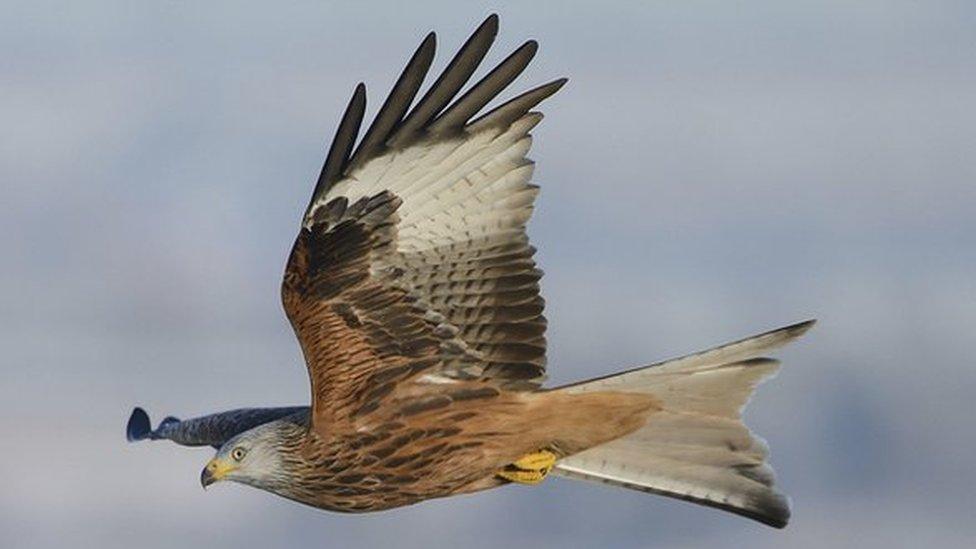
- Published26 June 2022
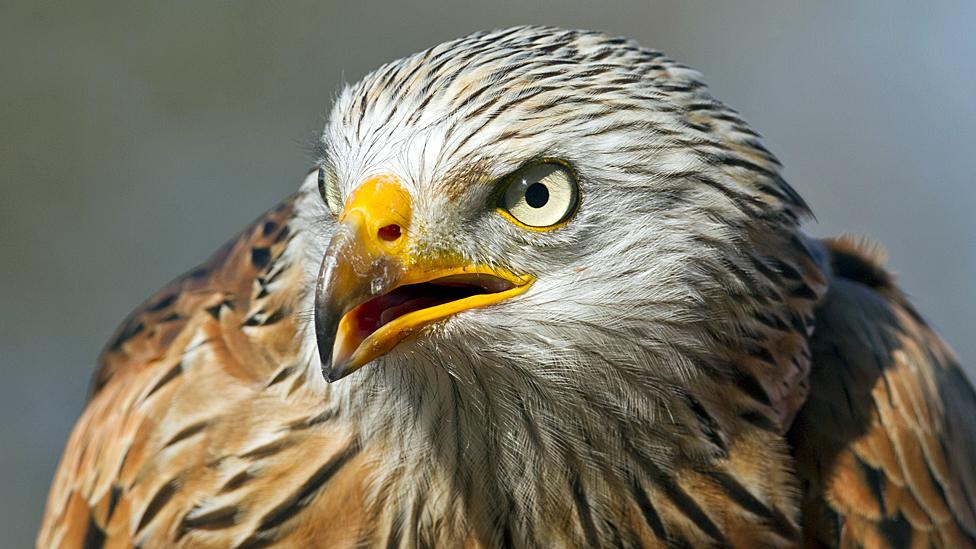
- Published13 November 2023
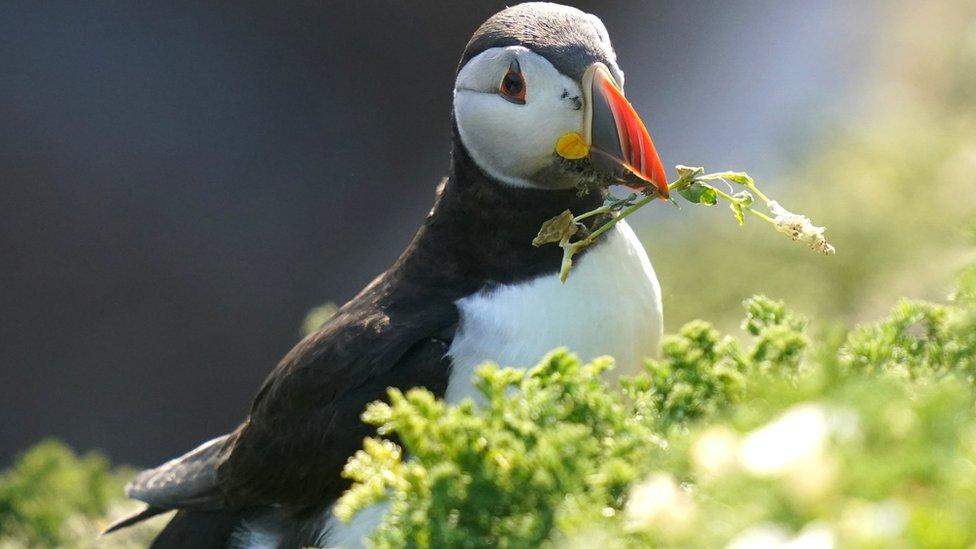
- Published28 March 2023
